CONTROL DOCUMENT
tags
by Michael Sullivan Smith
Tweets by @MSullivanSmith
On line, an RSS feed tracks the art's Twitter provenance from a 2014 grudge on centralized platforms on up to the present.

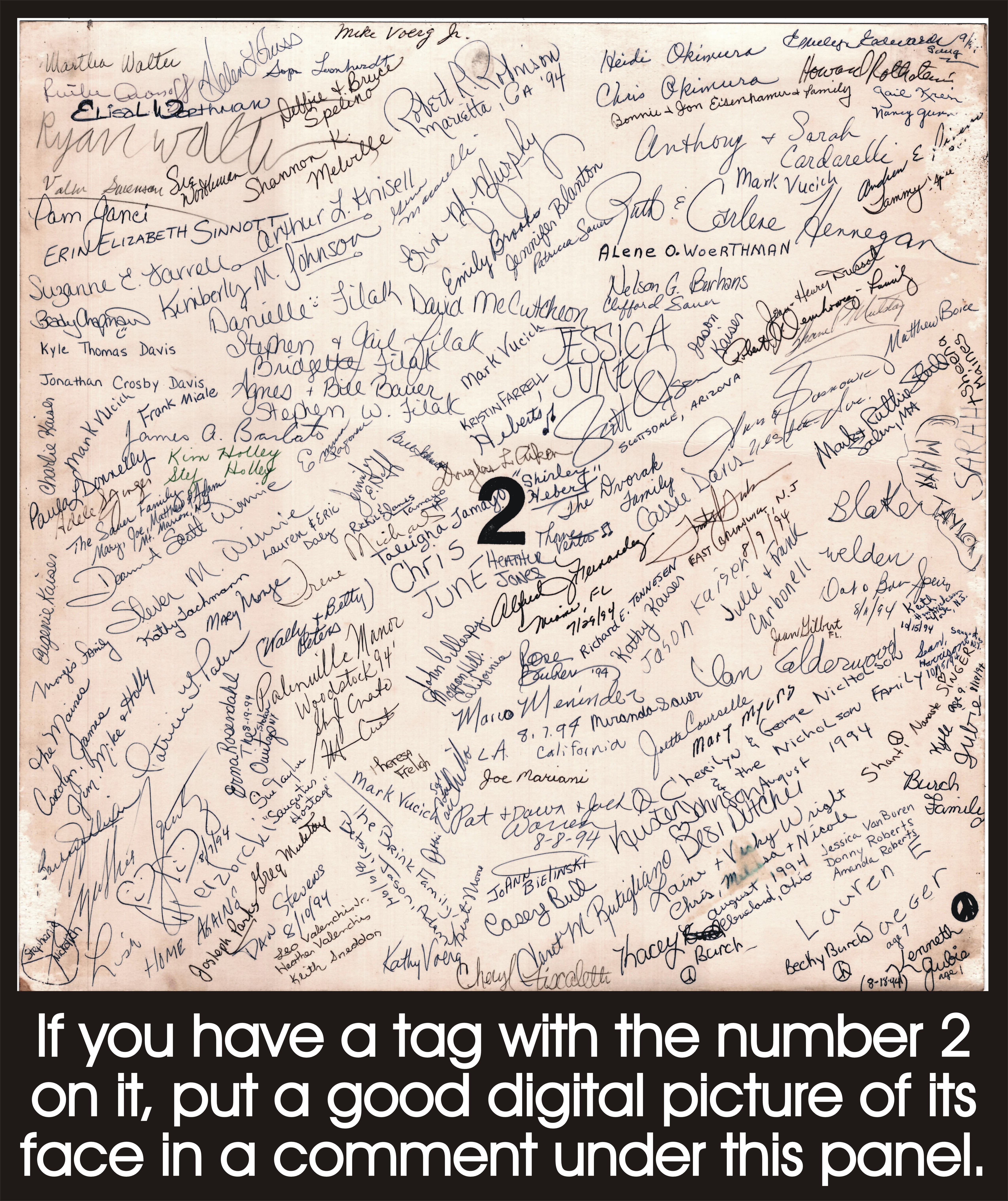
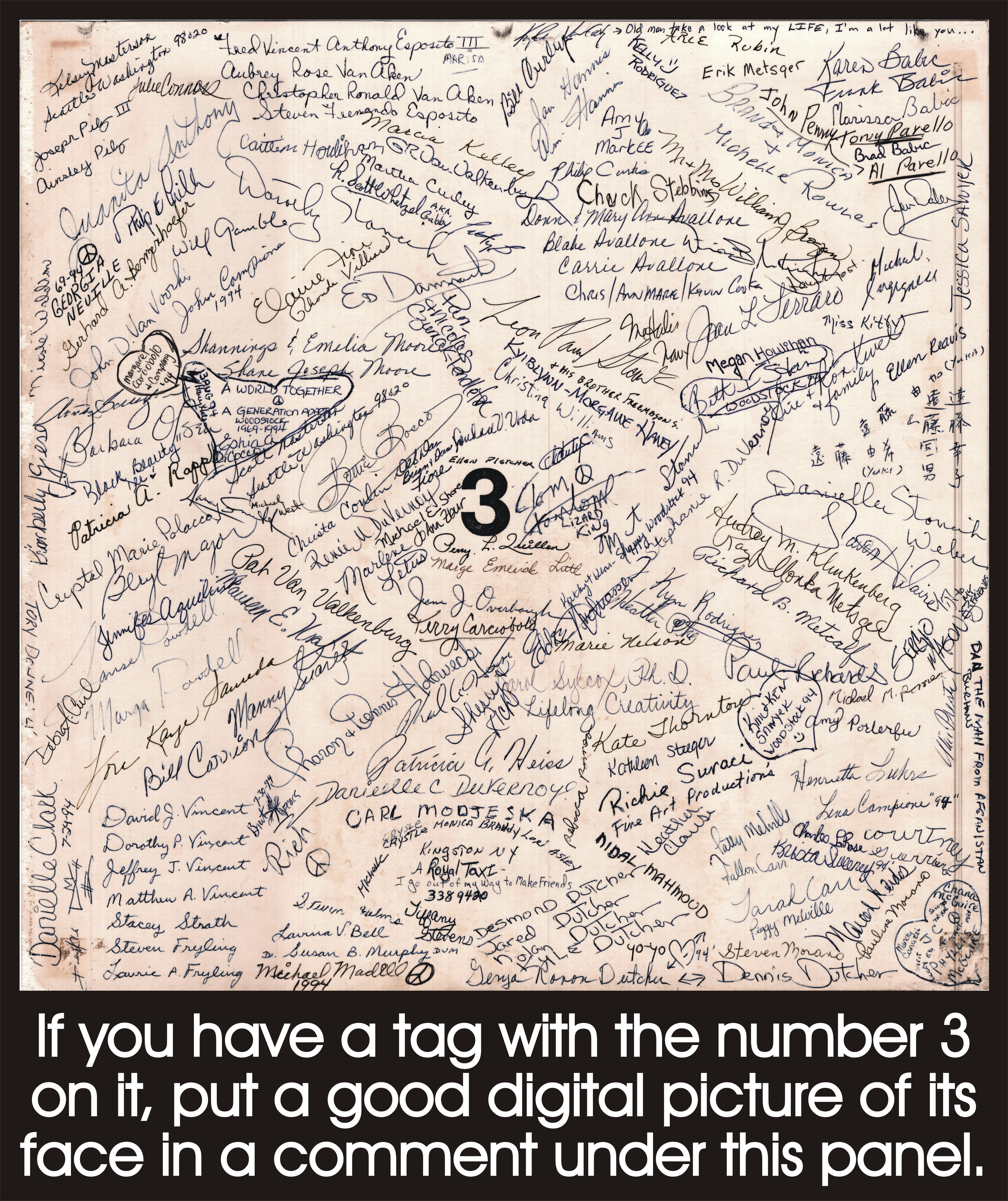

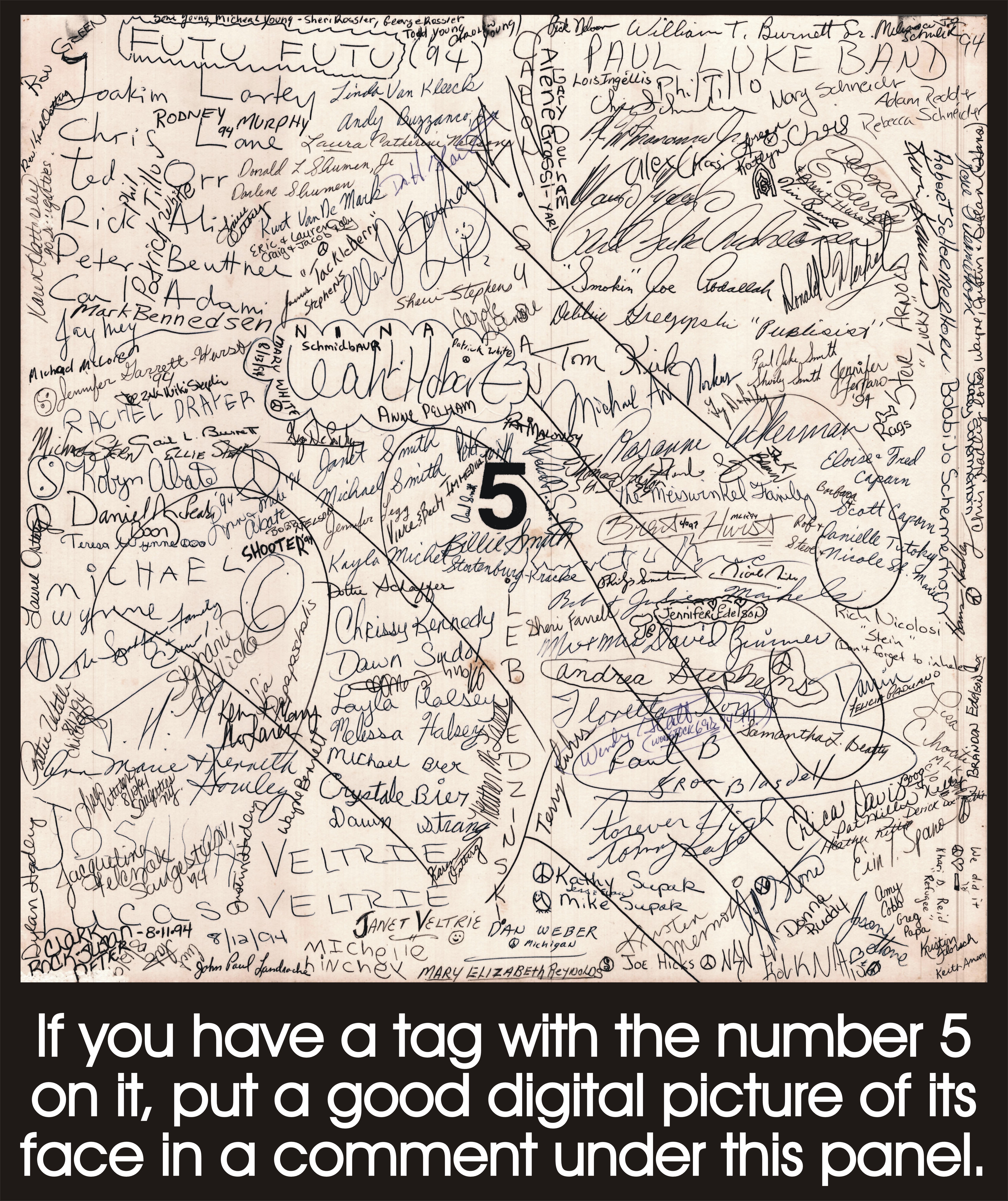
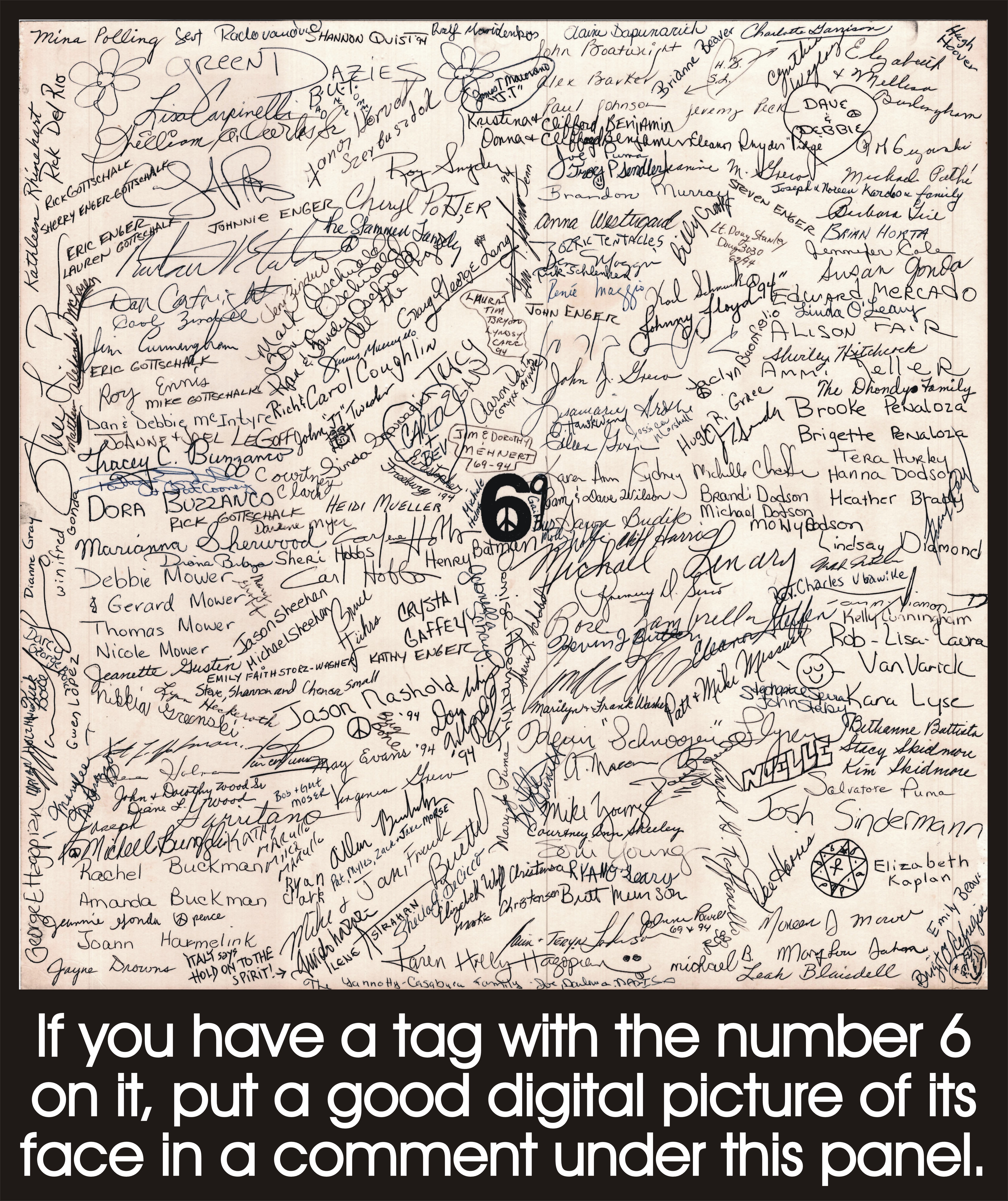
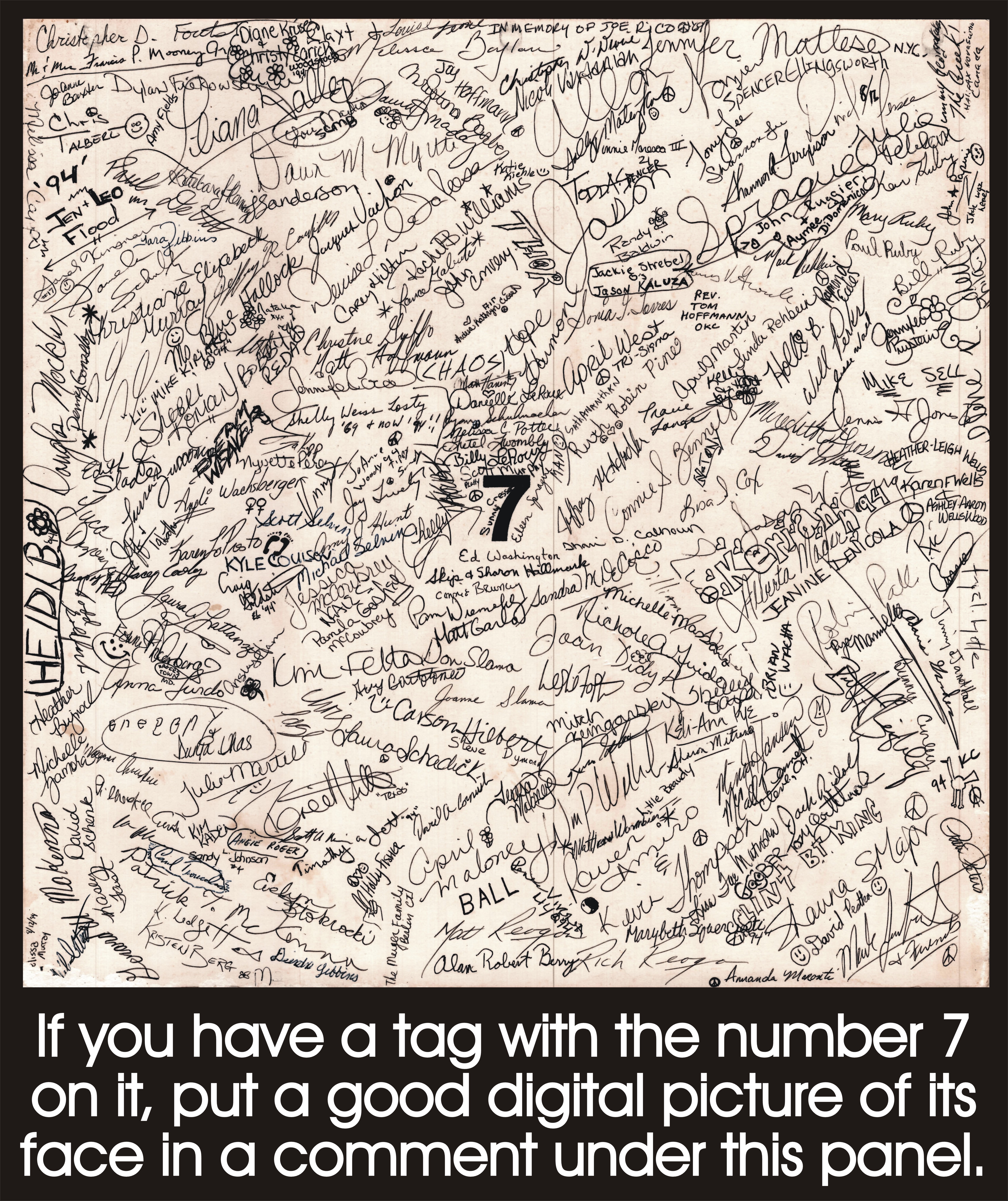


Right click and choose VIEW IMAGE to open enlarged view. Click return arrow to continue reading.
digital image
signatures in
actual things
This is a systemic art built upon a mechanism that makes sequential differences in prints visually discernible. In it, the artist exchanges its prints for signatures and these discernible changes are used to verify the provenance of the signature's identity.
The mechanism's purpose is to drive participation. It then is the participant's role in the art to simply put a digital representation of the print – in this work, the face side of a printed metal product – where it matches their signature's location on this Facebook page's archive.
This scenario is unique to a series of demonstrations that are testing how the deck can be stacked when feeding influences into deep learning algorithms. They all, as a group, imagine influencing a new literacy of images on the Internet that totally unique language concepts are being built around.
In this era, as so much Internet-based information is being curated to make it understandable, the old adage of the “picture worth a thousand words” never had its meaning clearer. The very idea of literacy is what intuitively asks for this “picture” to be in art's space. Ideas of a pure digital art are being tried right now to find a way for art's conceptions to fit a growing Internet space. This is part of that broader paradigm.
This is a systemic art that is building scenarios on two trans-language instances; the three crossing knot and the colors of strataprints. Both address roles of naturally changing compositions for building a visual literacy. They employ the digital finding aids that the Internet indexes every time a visual file is placed into it, and build these Internet addresses out to where they subvert Deep Learning's contextual analysis of data, affecting a connection to literacy, and language, by applying value attributions to digital identities.
A
The art concept here being built out now is preparing digital art to have value relative to what Deep Learning eventually builds into this literacy. In consensus protocol, this mechanism of sequential changes assures that human creativity retains some oversight as visual literacy becomes set in a fixed state.
The SignOn Tag

Back Story
The phrase "intersection of Art and Technology", in its present sense, gets a real "end of an era" feel from this story behind how making Strataprinter products digital collectibles got its start.
In late 1993, as the Woodstock'94 concert site was finally being approved for Winston Farm in Saugerties, NY, my fledgling business, beta testing the production capabilities of machines and materials for a special application of printing, was working my patents up for an intro into the arts and crafts market. After already working through developments for conductive thick film for electronics, and manufactured parts marking uses, this was well into an exploration of functional fluids in a phase for testing durable epoxies in a highly unique multicolor printing technique.
That “look” quickly got the attention of the Woodstock'94 event organizers, and all production had to be directed toward revamping output to meet the challenge a license for the Woodstock'94 logo, plus a separate contract to produce for MTV sales meant to my super-small local entrepreneurial enterprise in Saugerties.
Prior to that, though, I'd already planned into the production tests an ambitious program I hoped to use as a signature application for this market. I'd invested in, and placed at the entry to the village, where the CVS is now (moved to opposite the northbound thruway exit when I donated it to the Chamber in the fall of 1994) a small structure for an information center, and organized a campaign I named “SignOn to the Spirit” to attract donations to defray the facility's purchase and operation costs.
The inspiration for the name and for basing the program on signatures came from a commission I'd done for IBM ten years earlier. This was called “Sign up for Quality”. Pens with the slogan on them were given to 22,000 employees as they made their signatures on large cardboard panels in the dining halls across all of its campuses. IBM then reduced these signature-filled panels, using its photo lithography capabilities, to miniature films which I then assembled together and silk screened all the signatures at once onto one single six square foot stainless steel panel for a permanent display in IBM's Board Room in Armonk, NY.
For “SignOn”, the giveaway chosen to carry the message, instead of pens, was an aluminum dog tag with a ball chain. Signature panels served a purpose as a display of a “pledge” in this campaign just like in that of the ones for IBM.
The most consequential task in all that was getting the invention of a miniature butterfly to be printed in a tie dye color effect on the face of this ID tag. The back had a number and poetic message printed on it that referenced the signature panel – about returning to re-experience the memory of Saugerties where this signature would remain to be found in the future – but, the individuality of each print of the butterfly and the challenges around the fluid application to a metal substrate would turn out to have the greatest effect on today's digital world.
Today, all these decades-old color applications are rare, not just for their event memorabilia identity, but as objects whose identities as digital photos dovetail easily with the verification needs being developed for a collectibles marketplace. This concept was recently the topic of a series on Medium posts in late May and early June that have been made into a small-file mobile-friendly version like this at www.greatknot.com/2.html.
These few thousand “SignOn to the Spirit” tags that match numbers with signatures are the origin story of this Medium narrative, and now, here, being characterized as the unique, first beta tests of multicolored prints that initiated the connection between and the idea of image-based distributed ledgers and every example of practical output over the next six years of this technology's use. In this connection is the origin of an art application that highlights the viability of image codes as an art of the blockchain.
That signature campaign was interrupted to ramp up production for the licensed Woodstock'94 logo products. By that time about ten of the “SignOn” signature panels had been completely filled. However, the colorful butterfly was retained as the sales mark to share the back of these ID tags with the tiny text of the copyright notice. “Sign on to the Spirit” continued to indelibly represent this concept-based business on hundreds of products, following Woodstock'94, for the rest of the decade of the 1990's, to be found today on hundreds of thousands of multi-color miniature epoxy prints on aluminum dog tags and other challenging materials.
Which comes to how this is a digital art and how Facebook pages are set up to bring together the 55,000-strong distributed base of owners in possession of the licensed logo tags, and the whole distributed base from the SignOn tag signatures, past and present, on fb.me/saugerties, in an idea just made for emphasizing this connection.
Now, decades after the I closed that company down and my patents have passed into the public domain, hundreds of thousands of unique multicolor printings are out there to be dusted off, and become involved in this new area of technology that has my attention. They are prime to serve a concept that is now being developed that matches up scarce images with deep learning and image recognition applications on the Internet, in this case applying the image colorations to tests where digital image codes made from their sequential patterns act as markers.
To set this activity in motion a person with a tag makes a digital image of its full face and puts that on Facebook; at fb.me/saugerties; under its signature panel number. This makes the tag a digital creation, in that the mechanism that made the generative art embedded in the colors on the actual tag gives that digital image a public identity that makes the sequential relationships of the multitudes of subtle color migrations in all the tags an identifiable feature that algorithms find recognizable in an Internet application.
The identity found in the signature, the possession, and the digital patterns recognizable by the deep learning algorithms, join together to make an autonomous system of verification in line with blockchain protocol that only happens when a sequential process created by a single mechanism is at play.
There is neither actual nor virtual value creation in any art that is systemic to the use of a mechanism alone. The system is solely there to build future participation. For the creation of digital value, a relationship of the artist; simply in getting a signature and giving something for it in this case; opens up this potential.
The act of participation in the return of this digital presence to be with the owner's signature; to digitize the print on the face of the tag and put it on fb.me/saugerties; is the responsibility of the person that has what the artist gave in exchange for the signature. The process of doing this is what we'll get into next.
The SignOn Tag
The machine layer
Participation in the return of this digital photograph of the print on the face of your tag to put it with the signature panel on fb.me/saugerties whose number is on its back, is what we'll go over here.
The SignOn tag is the simplest application amongst a large number of trials researching ways to create unique identities with color; ranging from realistic or emblematic to more marbleized and abstract effects. Regardless of which, every tag had a recognizable image these color effects either filled or formed the background of. The SignOn tag was a fill arrangement using between seven and ten colors in a random, marbleized pattern.
The colors had no initiating pattern to follow and therefore the colors were applied differently for each print run. Examples of holding to a pattern of colors is found in runs done for the Woodstock99 tags and those Woodstock'94 tags done for MTV.
On first impression, the two things immediately identifiable as characteristics, are the shape of the tag and the logo or other visual graphic. The tag is the shape of a military dogtag and the picture on the SignOn tag is a butterfly encircled by “SignOn to the Spirit” with more commemorative words centered below this emblem.
What makes the tags uniquely adaptable to these experiments in deep learning identification is that the process of printing unique to the Strataprinter mechanism is its use of paste colors that, in their multicolor arrangements, do not blend with each other, but migrate into each other's territory randomly as they naturally deplete upon depositing the print.
No two prints will have the same edge alignment between their same 7 to 9 colors and, therefore, every print is unique.
This presents an opportunity to challenge the training of intelligent algorithms to sort patterns into sequences. The depletion of color causes sequential movements in their alignments with each other, and the placement in the sequence of print progression is identifiable.
For this art to perform properly all color placements and all their sequences of production are ideally matched to holders of individual tags, and their identities matched to signatures.
It is the sequencing that the art challenges AI to perform and it is the consistency in the quality of the digital photographs taken by the thousands of owners of tags in distribution that will make that possible.
There is a very strong argument for the usefulness of this to be read in www.greatknot.com/2.html. In this art, however, right now the highest use is in simply drawing together enough interest to build a user base for what is the ultimate conclusion stated in this consolidation of my Medium posts that had largely gone unnoticed in that medium.
Suffice it to say that these SignOn tag experiments are rare items, having been last produced twenty-five years ago using patents and mechanisms not applied to this use since. But to make how rare this is abundantly clear, we will put that in context next.
The SignOn Tag
The value of participation
The aspect of this art that has to do with participation builds a sense of familiarity with what makes rare and scarce things valuable. Making being able to parse things to get down to what verifies value is why these prints have characteristics that give them a built-in history. This first representation of the art of generating unending sequences is about having an easy entry into learning about uniqueness and authenticity.
In that respect, this artwork is collectibles 101. The masters level will not be reached without seeing the nuances that these SignOn tags divulge closeup through the jeweler's loop. Their individuality is obvious on every level of scale to those who have learned to see.
The signature panel in the art makes that manifest. Click on one of the signature panels on fb.me/saugerties. A separate tab opens on the browser with that panel in a viewer. The cursor on this viewer is a tiny magnifying glass that, when you place it over a detail on the image and click, magnifies this detail 6x. For what that means when viewing a tag, a parallel Facebook page being developed for Woodstock'94 tags uses this same capability for studying the differences between seemingly same images.
Printing on metal, in full chroma epoxy colors, is a legacy capability only graspable in the context of what takes place in the narrative in number 2 of these compact documents. This brings the era of the mechanism and its products to where they make sense of a broader scheme of things. The epic artwork, from its beginning to end, was hypothetically played out in this 12-post series on Medium in late spring of 2019.
In this it was made abundantly evident that objects can be planned to be identifiable. To prove this, a distributed base of owners and transactions between owners of the identifiable objects was designed to create a record after enough time lent a sense of value to its objectivity.
The time to do this arrived with the confluence of the twenty-fifth anniversary of the SignOn tag, the discovery of un-circulated product produced at the same time as that which has been under ownership all this time, and the ubiquity of the digital camera that makes recognition of differences in images practical for the first time.
Now, in this era of a wholly different concept of technology, this exchange of a tag for a signature takes on an entirely new meaning. The act of taking a tag and giving a signature is actually the artist “burning” his stake in that object to make the exchange, and the person that receives the tag giving their signature in recognition of that value transfer. The “burn” is a value creation equal to that which now has evolved over time as the originating exchanges are recorded after 25 years of ownership.
As the face of the SignOn tags are digitized and recorded in the Internet archive these original signatures make them valuable. Ideally, among those that respond with the digital image of their SignOn tag are individuals that are important enough to create a demand for owning or licensing their tag's unique image. Imagine that.
This is only possible with digital artifacts. Because both the signature and the original print qualify as models for digital recognition, their digital artifacts are as unique and valuable as they are. In that respect, a system of value that is prime for applying to distributed ledger technology is created. Since that concept is generally elusive to an average person, this serves the aims of this artwork in creating awareness of the larger purpose of the art.
The SignOn Tag
Permanence
A final observation is in order on what happened when the original motives of 1994 hit a wall and how that motivates the giveaway of those that were unused those twenty five years ago.
What is covered in the narrative in number 2 of these Internet pages is the secrecy surrounding the true nature of the sequential printing concept. At the time, that concept was subject to accusations of hypocrisy, when precision in all things in printing was the standard.
In 1977 I had created the seven-color-black double outline for the People masthead that was Time-Life's standard for registry in magazine cover printing for the next thirty years. My business had the name “Precision” in it. I was the preferred printer for alignment masks back when IBM computers were limited to the accuracy of the CRT display. This was my reputation.
Now the migration of color out of registry is what I am going for; as identifiable signatures; as the reputation of these SignOn tags; when they tempt the recognition algorithms of another form of precision in Artificial Intelligence.
If challenging the steady decline in attention is possible just by making it believable that there is something special about seven-to-nine colors printed a quarter century ago; to make a SignOn tag unique in the “eyes” of AI, then it has been worth the wait for AI to get here.
This heightened interest in the possibilities of a decentralized Internet makes baiting curiosity in anything remotely fitting a topic with even the elemental relationship to the blocks of a distributed ledger that SignOn tags display, in their fit to an archive, keeps the context in the gravitational field of a space that brings opportunities to understand that technology better and have channels opened to communicate with those developing art that relates to it.
This is in what the decentralized Internet space refers to as a scalable theme. It has in its itinerary the scaling of under ten thousand in the SignOn tag to in excess of 55,000 in the Woodstock'94 plan – just to be educational enough to go to the moon with cryptoknot. The cryptoknot story is just beginning.